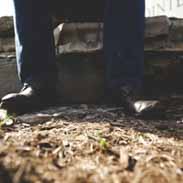Organic Chemistry Biology Quiz – Flashcards
Unlock all answers in this set
Unlock answersquestion
monosaccarides
answer
any of the class of sugars (e.g., glucose) that cannot be hydrolyzed to give a simpler sugar. (carbohydrate)
question
saturated fats
answer
fat molecules that have no double bonds between carbon molecules
question
polymer
answer
long chains of monomers
question
sterols
answer
any of a group of naturally occurring unsaturated steroid alcohols, typically waxy solids.
question
dehydration synthesis
answer
to put together while losing water
question
enzymes
answer
proteins that make reactions faster
question
protein
answer
organic compound composed of one or more chains of amino acids
question
cellulose
answer
insoluble substance, a polysaccharide consisting of chains of glucose monomers
question
waxes
answer
complex, vary mixtures of lipids /fatty acids bonded to long chain alcohols or carbon rings
question
polysaccarides
answer
a carbohydrate (e.g., starch, cellulose, or glycogen) whose molecules consist of a number of sugar molecules bonded together, bonding patterns will result in different behaviors
question
glycerol
answer
simple polyol compound. It is a colorless, odorless, viscous liquid
question
fatty acid
answer
carboxylic acid consisting of a hydrocarbon chain and a terminal carboxyl group
question
phospholipids
answer
a lipid containing a phosphate group in its molecule, e.g., lecithin.
question
nucleic acids
answer
chains of nucleotides, esp. in DNA or RNA, one of 4 biomolecules,
question
organic
answer
of, relating to, or derived from living matter
question
carbohydrate
answer
organic compounds that consist of carbon, hydrogen, and oxygen in a 1:2:1 ratio
question
nucleotide
answer
SMALL ORGANIC MOLECULES CONSISTING OF A 5 CARBON SUGAR, A PHOSPHATE GROUP AND A NITROGENOUS BASE
question
functional groups
answer
A CLUSTER OF ATOMS, COVALENTLY BONDED TO A CARBON ATOM, THAT IMPART SPECIFIC CHEMICAL PROPERTIES TO A MOLECULE.
question
glycogen
answer
substance deposited in bodily tissues as a store of carbohydrates. It is a polysaccharide that forms glucose on hydrolysis.
question
unsaturated fats
answer
tends not to raise the level of LDL ('bad') cholesterol in the blood.
question
monomer
answer
subunits of larger molecules
question
triglycerides
answer
THE MOST ABUNDANT AND RICH ENERGY SOURCE IN VERTEBRATE BODIES. THEY ARE CONCENTRATED IN ADIPOSE (FAT) TISSUE.
question
hydrolosis
answer
the chemical breakdown of a compound due to reaction with water
question
hydrophobic
answer
tending to repel or fail to mix with water
question
4 organic compounds
answer
carbohydrates, lipids, proteins, nucleic acids
question
carbohydrates
answer
monomer: monosaccarides
question
lipids
answer
monomer: glycerol and fatty acids
question
nucleic acids
answer
monomer: nucleotides
question
proteins
answer
monomer: amino acids
question
carbohydrate function
answer
short term energy source
question
lipid function
answer
long term energy storage, components of the membrane
question
nucleic acid function
answer
information molecule, hereditary molecule
question
protein function
answer
structural in hair and skin, digestive enzymes
question
saturated difference
answer
moleculeswith single covalent bonds, solid at room temperature
question
unsaturated difference
answer
liquid at room temperature, 1 or more double covalent bond, found in kinks which prevents fat from packing tight
question
Primary protein structure
answer
1st structure: POLYPEPTIDE CHAIN SEQUENCE
question
Secondary protein structure
answer
2nd structure: A COILED LIKE, OR SHEET LIKE, ARRAY HELD TOGETHER BY HYDROGEN BONDS BETWEEN THE DIFFERENT PARTS OF THE CHAIN
question
Tertiary protein structure
answer
3rd structure: THE COILS AND SHEETS TWIST AND FOLD INTO DOMAINS LIKE BARRELS (which create tunnels) OR POCKETS (which provide binding sites)
question
Quarternary protein structure
answer
4th structure: WHEN TWO OR MORE POLYPEPTIDE CHAINS BOND TOGETHER TO FORM A GLOBULAR PROTEIN (hemoglobin for example)
question
functional groups
answer
hydroxyl, methyl, carbonyl, carboxyl, amino
question
hydroxyl
answer
OH, present in alcohols and many other organic compounds.
question
carboxyl
answer
COOH, present in most organic acids.
question
polymer
answer
formed by a large number of molecules called monomers are joined sequentially, forming a chain, broken down by hydrolysis, which means "to split water,"
question
amino acid structure
answer
NH2 group connected to carbon atom
question
nucleotide structure
answer
built by the sugar, the base, and the phosphate in DNA
question
lipid
answer
FATTY, OILY, WAXY ORGANIC COMPOUNDS THAT ARE INSOLUBLE IN WATER.



